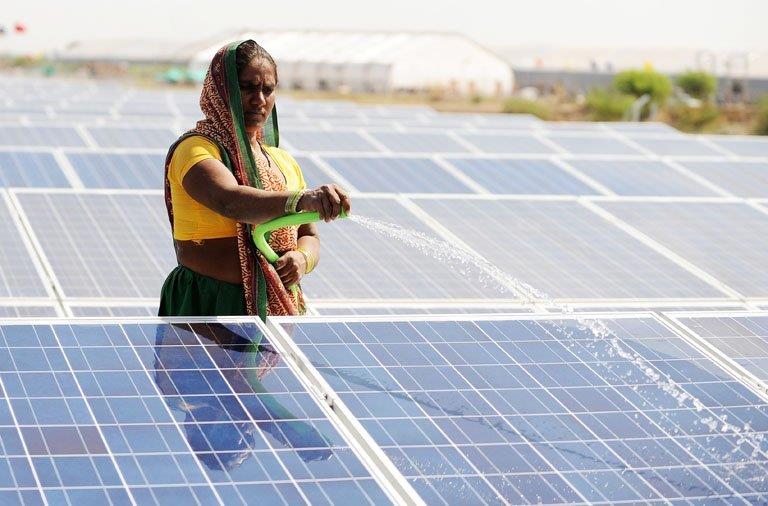April 17, 2013
Prime Minister Manmohan Singh has called on companies to help make India a solar energy hub in hopes of boosting power supply and reducing pollution. India’s National Solar Mission, which was launched in 2010, plans to generate 20 gigawatts of solar power by 2022.

April 17, 2013
Prime Minister Manmohan Singh has called on companies to help make India a solar energy hub in hopes of boosting power supply and reducing pollution. India’s National Solar Mission, which was launched in 2010, plans to generate 20 gigawatts of solar power by 2022.

India's prime minister urged global companies on Wednesday to make the sun-baked South Asian nation a solar energy hub as the country seeks to cut its chronic power shortages.
India, which has an average of 300 sunny days a year, sees solar power as a potentially vital energy source that could be key to boosting power supplies and reducing greenhouse gas emission in the world's third-worst carbon polluter.
"India is potentially a large market for production of such (solar) equipment and it is also a potentially competitive, attractive production base for supplying other countries," Premier Manmohan Singh told a global energy conference.
"We therefore strongly encourage global manufacturers to set up production facilities in this area," Singh said at the Fourth Clean Energy Ministerial meeting in New Delhi attended by representatives of over 20 nations.
India is working urgently to develop alternative power sources and wean itself away from polluting coal-fired generation to power an economy that is expected to grow by at least six percent this financial year.
It has just 551 megawatts of solar capacity installed currently, according to government figures, and some 70 percent of the equipment comes from abroad.
India's National Solar Mission launched in 2010 aims to generate 20 gigawatts of solar power by 2022 — equivalent to one-eighth of the nation's current installed power base.
The solar energy drive is also part of efforts to tackle frequent power outages especially in rural India that economists say knock an average 1.2 percentage points off annual growth.
But barriers to widespread introduction of solar power remain such as lack of technology and subsidies to consumers. Once installed, however, experts say the costs are low and are mainly confined to maintenance.
The Indian government has unveiled draft legislation that would allow the solar industry to obtain grants covering up to 40 percent of installation costs.
Courtesy: AFP







































































































